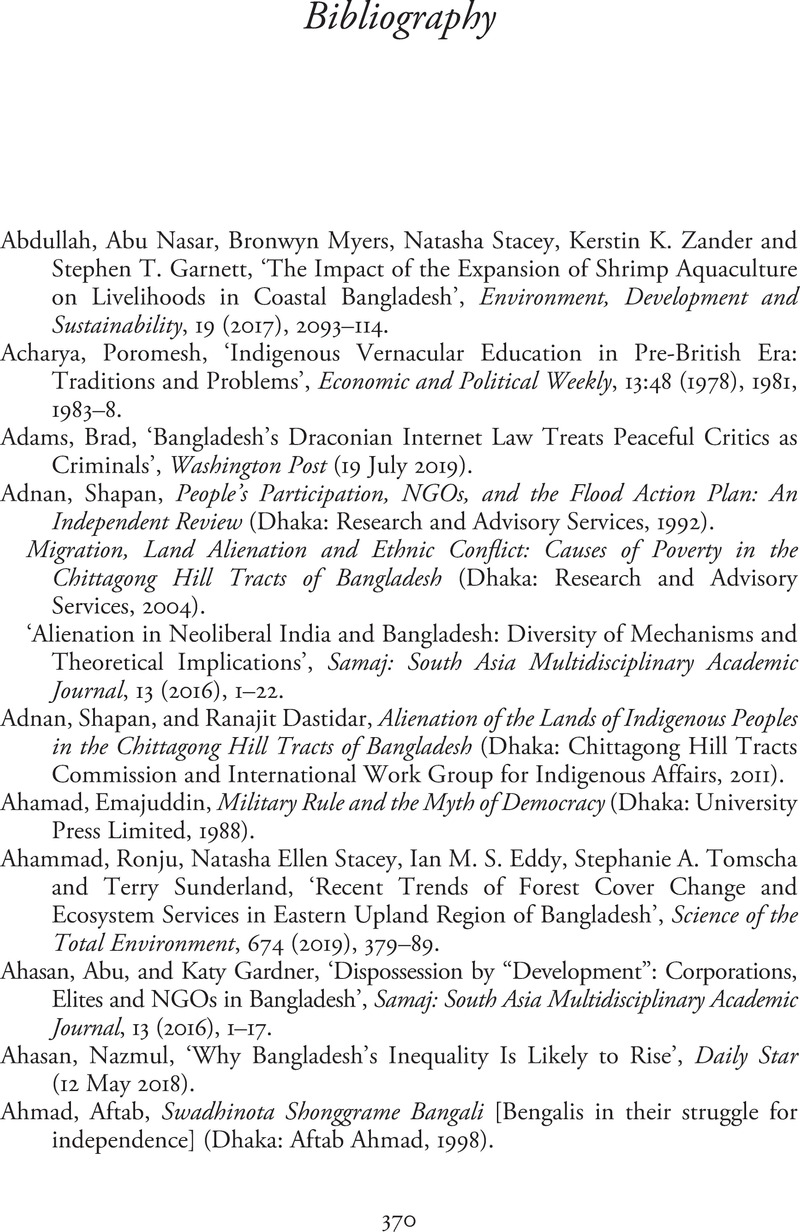Published online by Cambridge University Press: 17 June 2021

Asian Century: The Rise and Fall of Mujib, directed by Shehzad Hameed Ahmad (2017).
Deshantori [The Migrant], directed by Sujan Mahmud and Mridul Chowdhury (2006).
Eclipse, directed by Shaheen Akhter and Shameem Akhtar (1994).
Every Good Marriage Begins With Tears, directed by Simon Chambers (2006).
Ghare-Baire [Home and the World], directed by Satyajit Ray (1984).
Hazaribagh: Toxic Leather, directed by Eric de la Varène and Elise Darblay (2013).
Iron Crows, directed by Bong-Nam Park (2009).
Licu’s Holidays/Le Ferie di Licu, directed by Vittorio Moroni (2007).
A Life Suspended, directed by Kazuyo Minamide (2013).
Lohakhor [Iron Eaters], directed by Shaheen Dil-Riaz (2007).
Muktir Gan [Song of Freedom] (1995) and Muktir Kotha [Words of Freedom] (1998), directed by Tareque and Catherine Masud.
Okul Nodi [Endless River], directed by Tuni Chatterji (2012).
The Young Man Was (four parts), directed by Naeem Mohaiemen (2011–2016).
To save this book to your Kindle, first ensure [email protected] is added to your Approved Personal Document E-mail List under your Personal Document Settings on the Manage Your Content and Devices page of your Amazon account. Then enter the ‘name’ part of your Kindle email address below. Find out more about saving to your Kindle.
Note you can select to save to either the @free.kindle.com or @kindle.com variations. ‘@free.kindle.com’ emails are free but can only be saved to your device when it is connected to wi-fi. ‘@kindle.com’ emails can be delivered even when you are not connected to wi-fi, but note that service fees apply.
Find out more about the Kindle Personal Document Service.
To save content items to your account, please confirm that you agree to abide by our usage policies. If this is the first time you use this feature, you will be asked to authorise Cambridge Core to connect with your account. Find out more about saving content to Dropbox.
To save content items to your account, please confirm that you agree to abide by our usage policies. If this is the first time you use this feature, you will be asked to authorise Cambridge Core to connect with your account. Find out more about saving content to Google Drive.